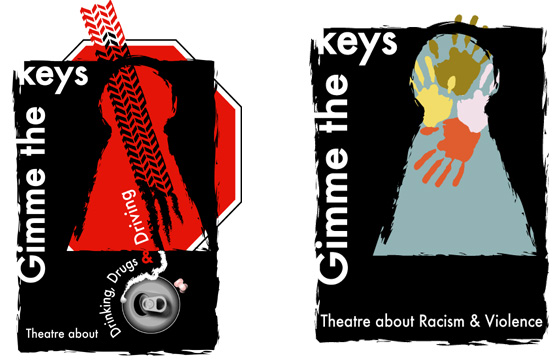
The dangers of drinking and driving are well documented.There are many programs in the schools and the public realm that have been using scare tactics for years. Youth and adults alike know full well that getting behind the wheel drunk or stoned can lead to their own or another person's serious injury or death. Yet the incidence of serious traffic accidents that are alcohol/drug related continues to rise. What is the central problem, and what can we do?
Apparently, youth and adults alike do not have the skills to navigate the internal dialogue (with oneself) or the external dialogue (with friends and relatives) that could lead to not getting behind the wheel when intoxicated.
There have been many initiatives in the last decade to tackle the issue of violence and racism in schools and the larger community. Yet every day we see reports in the news of escalating levels of both. Recently, here in Vancouver, a youth has had his throat slashed at a school that has claimed over and over again that it has no violence issues. Another youth was murdered in an overtly racist attack outside school. The response from school administration and police was that racism was not a factor, despite the pleas of both the Filipino and East Indian communities to recognize the situation for what it was. These stories proliferate across the country and their net result is primarily a media circus followed by an increasingly over-whelmed and conflicted community.
Despite numerous racism-sensitizing and violence-prevention programs in schools and workplaces, we can see that communities still do not have the ability to openly discuss and articulate solutions for the problems of changing demographics in multicultural Canada and the societal violence which has become linked to it.
While we acknowledge that there is no single answer to these very complex issues, we do know from experience that community dialogue is an important first step to community action. We also know that within a creative, safe space it is possible, through THEATRE FOR LIVING (TFL) techniques, to facilitate the emergence of practical, community-based solutions.
"The (THEATRE FOR LIVING) workshops and performances have strengthened our sense of community at Gladstone. Staff and students are focussed on a common goal, and that is to make our school a safer place for all. This has enhanced the sense of belonging and personal responsibility for what happens in our school."
Mr. D. Odegaard, Vice Principal, Gladstone Secondary School, 2002
We are proposing a national project that would bring people who have trained in Headlines' TFL techniques together with local community organizations, school administrations, youth and youth organizations. I (David Diamond, Headlines Artistic Director) will spend 8 Ð 10 days in seven communities spread throughout the country, creating community-specific Forum Theatre plays with youth and the TFL trainees. During this time, I will hand over the running of the project to the local trainee(s). Headlines will administer a budget for each community, that will seed the activity, on a part-time basis, for up to a year. After that time, the local trainee(s) will be expected to continue the work independently in partnership with local organizations. The particular subject matter forming the focus for this seed work will be determined by the communities themselves, within the mandate of what is outlined above. Once the project is up and running, communities will be free to expand the focus of the work into whichever areas are most relevant to them.
• What is Forum Theatre?
Forum Theatre is an opportunity for creative, community-based dialogue. The theatre is created and performed by community members who are living the issues under investigation. Over the course of a Headlines' THEATRE FOR LIVING workshop, participants engage in very specific games and exercises that help them investigate issues at a deep level. Then, they create a short plays, in this case, perhaps 5 minutes in duration. Each play is performed once, all the way through, so the audience can see the situation and the problems presented. The story builds to a crisis and stops there, offering no solutions. Each play is then run again, with audience members able to "freeze" the action at any point where they see a character engaged in a struggle. An audience member yells "stop!", comes into the playing area, replaces the character s/he sees struggling with the problem, and tries out his/her idea. We call this an Ôintervention'. The process is fun, profound, entertaining and full of surprises and learning.
"On Feb. 21, 2003 I saw a powerful and very familiar portrayal of bullying and the effects it has on people involved. Don't Say a Word was an excellent tool that used youth involvement to create a powerful and very impacting message about real and important issues, while ensuring the participation and recognition of culturally and socially diverse voices that individual youth represent."
Monica Lee, Asian Society for the Intervention of AIDS (ASIA), April 3, 2003
"I was impressed with the way Don't Say a Word created a space for people to grapple with issues of violence in very real and meaningful ways. It was fabulous to see the engagement of the audience, particularly the youth, in creating new possibilities. I was struck by the multitude of openings for change highlighted in the production, and it prompted me to consider the opportunities I have in my life to make 'insightful interventions'. I left the production feeling very hopeful and inspired."
Desiree Sattler, audience member, Feb. 28, 2003
Thanks to our funders:
The Melusine Foundation • Hamber Foundation • The Lando Foundation









